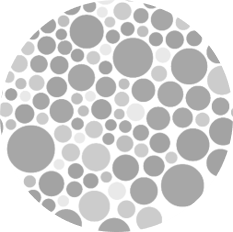
Ted Lewis
University of Alberta
Discrete Mathematics | 1985
Meir Katchalski; Ted Lewis; Joseph Zaks
Abstract A geometric permutation is the pair of permutations formed by a common transversal for a finite family of disjoint convex sets in the plane. It is shown that if A is a family of n convex and pairwise disjoint segments in the plane then the number of geometric permutations formed by all common transversals of A cannot be more than n .
Discrete and Computational Geometry | 1992
Meir Katchalski; Ted Lewis; A. Liu
We construct a family ofn disjoint convex set in ℝd having (n/(d−1))d−1 geometric permutations. As well, we complete the enumeration problem for geometric permutations of families of disjoint translates of a convex set in the plane, settle the case for cubes in ℝd, and construct a family ofd+1 translates in ℝd admitting (d+1)!/2 geometric permutations.
Discrete and Computational Geometry | 1986
Meir Katchalski; Ted Lewis; A. Liu
The object of this paper is to study how many essentially different common transversals a family of convex sets on the plane can have. In particular, we consider the case where the family consists of pairwise disjoint translates of a single convex set.
Discrete Mathematics | 1987
Meir Katchalski; Ted Lewis; A. Liu
Abstract The object of this paper is to study how many essentially different common transversals a family of convex sets on the plane can have. In particular we consider the case where the family consists of pairwise disjoint translates of a single convex set.
Proceedings of the American Mathematical Society | 1980
Meir Katchalski; Ted Lewis
A family of convex sets in the plane admits a common transversal if there is a straight line which intersects (cuts) each member of the family. It is shown that there is a positive integer k such that for any compact convex set C in the plane and for any finite family & of pairwise disjoint translates of C: If each 3-membered subfamily of & admits a common transversal then there is a subfamily
Geometriae Dedicata | 1996
Ted Lewis; Balder Von Hohenbalken; Victor Klee
of & such that i& admits a common transversal and \â \ 9> \ <,k.
Discrete Mathematics | 1982
Meir Katchalski; Ted Lewis
A family S of sets in Rd is sundered if for each way of choosing a point from r≤d+1 members of S, the chosen points form the vertex-set of an (r−1)-simplex. Bisztriczky proved that for each sundered family S of d convex bodies in Rd, and for each partition (S′, S″), of S, there are exactly two hyperplanes each of which supports all the members of S and separates the members of S′ from the members of S″. This note provides an alternate proof by obtaining each of the desired supports as (in effect) a fixed point of a continuous self-mapping of the cartesian product of the bodies.
Linear Algebra and its Applications | 1993
Victor Klee; Balder Von Hohenbalken; Ted Lewis
Let F be a planar family of pairwise disjoint translates of a parallelogram. It is shown that if every four members of F are intersected by some straight line, then there is a straight line which intersects all but at most two members of F. If it is instead assumed that every two members of F are intersected by some line that is parallel to one of the edges of the parallelogram, then the same conclusion holds.
Geometriae Dedicata | 1980
Ted Lewis
Abstract A sequence (A1,…,An) of nonempty subsets of R m is an S-system if for each choice of a1∈A1,…,an∈An, the nullspace of the matrix [a1,…,an] is a line that penetrates the strictly positive orthant of R n. For the case in which each Aj is a sign cone, S-systems are basic to the study of the sign-solvability of systems of linear equations; in that case, they can be recognized in time O(m2). The present paper provides several characterizations of general S-systems and describes a polynomial-time algorithm (based on linear programming) for the recognition of such systems when the Aj are arbitrary finitely presented convex cones.
Discrete and Computational Geometry | 1997
Victor Klee; Ted Lewis; B. Von Hohenbalken



